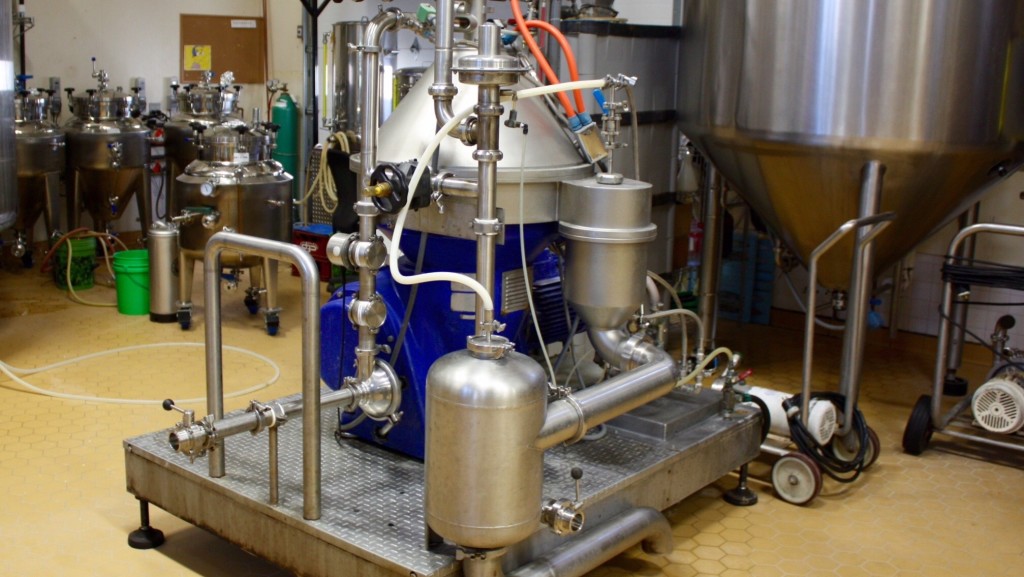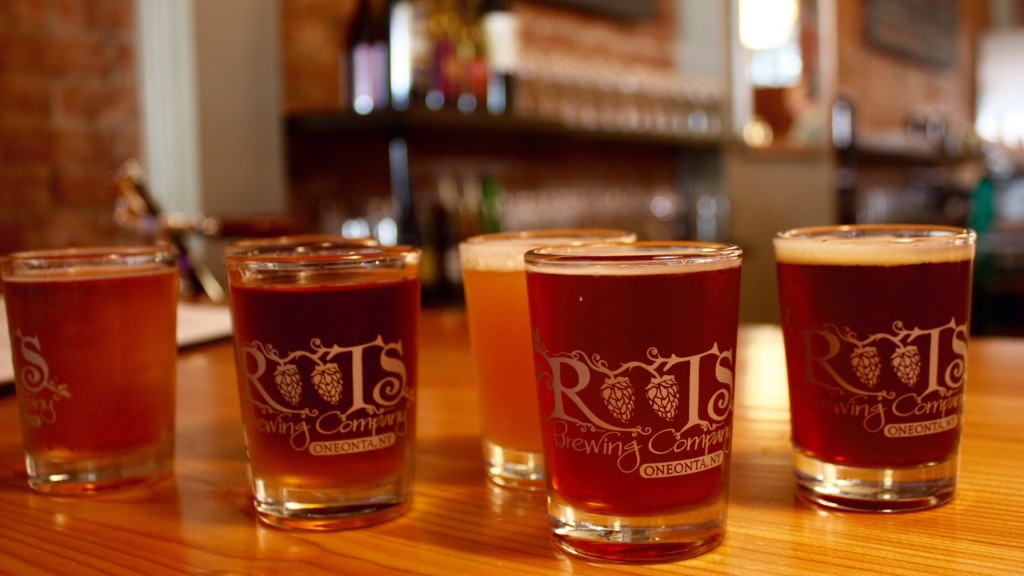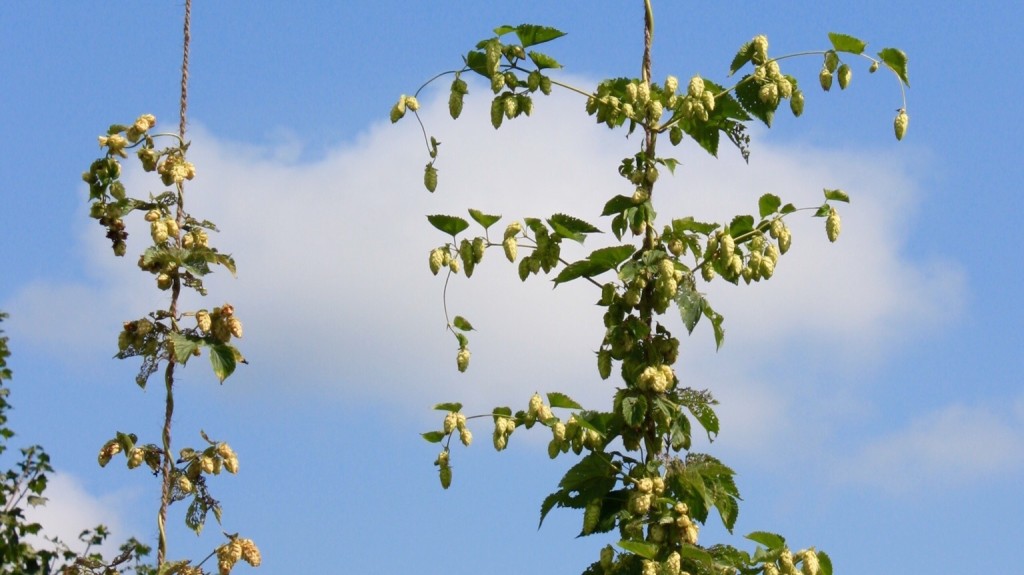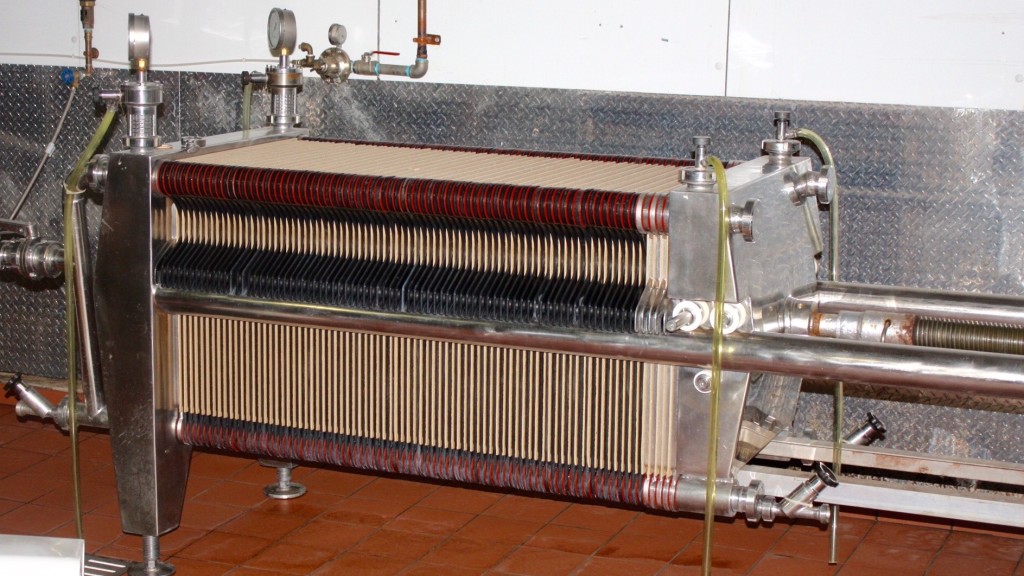ABV – Alcohol By Volume, by far the most common way of measuring the strength or alcohol content of beer. This is typically displayed on the label in a percentage (e.g. 6.4% or 10.5%). Some labels may also display ABW which means Alcohol By Weight but this is much less common.
Adjuncts – These are additives used in the brewing process to introduce sugars or flavors to beers. These would be any grains, other than barley, and include most commonly corn or rice. This is done to make the beer lighter bodied and less expensive to produce.
Altbier – The German word for Old Beer, this beer is traditionally a dark copper color with a fruity taste that derives from a top-fermenting yeast and a cold temperature fermentation process. Examples include Long Trail Double Bag and Tuckerman ALTitude.
Barleywine – A deep amber to black beer in a traditional English style that has a variety of levels of hoppy flavor (American being more hoppy, British less) and has an alcohol content similar to wine in the 8-12% range. Examples include Firestone Walker Helldorado and Great Divide Old Ruffian.
Barrel – The standard barrel is a measurement in beer production equals 31.5 US gallons.
Barrel Aged (BA) – The process by which a beer is aged in a wooden barrel. This will typically infuse the flavor of the woods, most commonly oak or walnut, into the beer.
Bitter – The English term for pale ale, typically a beer in the 3-7% ABV range with a golden or dark amber color. Examples include the Victory Uncle Teddy’s Bitter and Brooklyn Breweries Brooklyn Bitter.
Bock – The bock family of beers are strong German lagers that range in color from light copper to dark brown. Many sub-styles can be found including maibock, doppelbock, and eisbock. Traditionally bocks are sweet and relatively strong with ABV ranging between 6-8% with some of the varieties, such as the eisbock, reaching upwards of 13%. Examples include Mammoth Blondibock and Harpoon Leviathan Uber-Bock.
Bomber – A bottle for beer that contains 22 oz or 650 ml.
Brettanomyces (Brett) – A non spore forming yeast used in wine and beer production found mostly in Belgian pale ales like saisons and farmhouse ales.
Brewpub – A pub that brews its own beer and sells a minimum of 50% of its product on premises.
Cask Conditioned – A beer that is served while still in the fermentation process, usually with an artificial carbonation.
Centrifuge – Some breweries will use a high speed centrifuge which will spin the fermented beer at high speeds (8,000-12,000 rpm) to spin out any solid contaminants. This process would happen shortly before the bottling process.

Crowner – A machine that takes filled bottles on a bottling line and applies and crimps the metal cap.
Dubbel – Also known as ‘double’. This is a beer in the Belgian Trappist naming group that includes Tripel. Belgian Dubbel beers are a brown ale, usually fairly strong in the 6-8% ABV range without a bitter hoppy taste and a pronounced cereal and fruity character. Examples include Ommegang Abbey Ale and Brother David’s Double Abbey Ale
Eisbock – This specialty beer comes from the Kulmbach district of Germany and is created by freezing doppelbock and removing the ice crystals as they form resulting in a very potent brew upwards of 13% ABV. Examples include Kuhnhenn Raspberry Eisbock (15.5% ABV) and Southampton Publick House Double Ice Bock (18.0% ABV).
Flight – A sampling of beers, most often four or more different beers, served in 3-6 ounce sizes served in a particular order to create a journey from the lightest to the darkest flavors.

Flocculation – Visible clumps of yeast that collect at the bottom of a bottle or brewing tank.
Growler – A glass vessel used for purchasing beer served on tap from a brewpub. Traditionally growlers were 64 oz / 1.98 L however many sizes are now being produced and sold ranging from 1 gallon down to 24 oz.
Hefeweizen – Hefe is the German word for yeast, a Hefeweizen is a German style wheat beer that is unfiltered and often has yeast sediment in the bottle. Examples include the Sierra Nevada Kellerweis Hefeweizen and the High Point Ramstein Double Platinum Blonde.
Hops – The female flower portion of the Humulus Lupulus plant that provides the bitter taste in beers. The hops flavor is prevalent in many ales and especially in IPA flavors.

IBU – International Bittering Units. A measure for the bitterness of a beer. This scale is described in whole numbers ranging from 0 to just over 100. A light lager will typically range 10-30 IBUs while an IPA will typically range between 60 and 110 IBUs.
IPA – India Pale Ale. A beer brewed from a pale malt in the traditional ale category with a heavy bitter hops flavor. Examples include the Trillium Congress Street IPA and Bell’s Brewery Two Hearted Ale.
Keg – A vessel for serving beer, typically served under pressure with carbonation added. Kegs come in different sizes and are usually described as a 1/2, 1/4, or pony keg.
Kölsch – A German style clear pale lager. Kölsch is fermented warm and then conditioned cold for a crisp light taste. Examples include Coast Brewing 32/50 and Brauerei zur Malzmühle Mühlen Kölsch.
Lager – A variety of beer that is fermented at a low temperature. These beers typically have a more subdued taste and are low on the ABV and IBU scales. Some well known lagers are Yuengling, Budweiser, Stella Artos, and most of the commercial American light beers.
Lagering – The process by which beer is left to ferment at cold temperatures for several weeks or months allowing the yeast to slowly convert sugars to alcohol and carbonation.
Lambic – A beer typically brewed in southern Belgium that has a dry cider-like taste with a sour aftertaste. Lambic beers are brewed by being exposed to wild yeasts and bacteria rather than cultivated Brewers yeast like most beers. Examples include Upland Persimmon Lambic and Six Rivers Raspberry Lambic.
Lautering – A process occurring in a vessel called a Lauter Tun by which the wort is circulated through a mesh filter with sugars and grain particles being removed before the kettle boiling process.
Maibock – Also known as Helles Bock. This is a Helles lager brewed to match the 6-8% ABV strength of a traditional bock beer. The result is a stronger beer with bock flavors but a lighter color and having a creamy persistent head. Examples include Rogues Dead Guy Ale and Tröegs Cultivator
Malt – The process by which sugars are produced from the insoluble starches in barley by steeping in water and boiling over a period of time.
Mash Tun – The vessel where the initial cooking and mixing of beers raw ingredients take place. In this step of the process, filtered water is mixed with small malt and cooked at a low temperature to create the wort.
Mill – A machine that crushes the malt and prepares the grains for introduction to the wort.
Nitro – Beers, typically stouts and porters, that can be served “on nitro” where nitrogen is used rather than carbon dioxide as the carbonating gas. This gives the beer a very smooth taste and the tiny bubbles allow for a very creamy texture and mouth feel.
Octoberfest – Possibly the most mislabeled beer of all time, only six breweries are designated to brew true Octoberfest beer that is legally to be served in Munich for the Octoberfest celebration. Elsewhere in the world, many pale to medium lagers are produced and named Octoberfest to celebrate this time of year. The true Octoberfest beers all come from Augustiner-Bräu, Hacker-Pschorr-Bräu, Löwenbräu, Paulaner, Spatenbräu, or Staatliches Hofbräu-München.
Pilsner – Also called a Pils. This is a pale lager originally brewed in the Czech Republic in 1842. A Pilsner is a very light, clear beer with a 4-5% ABV (Pilsners labeled Export can have a higher ABV) and depending on what region they come from will have a taste from bitter and earthy to slightly sweet. Examples include Oscar Blues Mama’s Little Yella Pils and Paulaner Premium Pils.
Porter – A dark style beer originally brewed in London. Traditional methods of brewing using top-fermenting yeast have been replaced by many brewers by using adjuncts and additives such as molasses and corn syrup making this one of the most varied categories of beers. Examples include Fuller’s London Porter and Breckenridge Vanilla Porter.
Press Filter – A series of filters pressed into a large rack where the completed beer is pushed through to remove any particles that would cloud the beer. Not all beers should be crystal clear so this is an optional process.

Radler – Radler is the German name for cyclist. This beer, which is a subset of the Shandy beers, is traditionally a 50/50 mix of beer and sparkling lemonade. The true origin of the name is lost however it is believed to have been the refreshing beverage of choice for cyclists at one point. Examples include Sam Adams Porch Rocker and Boulevard Ginger Lemon Radler.
Rye Beer – Any beer where rye is substituted for some (up to around 60%) of the barley in the wort. Some of these variants have a strong hoppy flavor and will be called a Rye-P-A. Examples include Boulevard’s Rye-on-Rye and Founders Black Rye.
Saison – Also sometimes called a farmhouse ale. This is a traditionally French-style pale ale with a fruity or spicy flavor and is often unfiltered and bottle conditioned. Examples include the Allagash Interlude and the Hill Farmstead Ann.
Scotch Ale – A dark and often bittersweet variation on the pale ale that has a full body and a dark color from a roasted malt. This beer can be stronger in alcohol content and when described as “Wee-Heavy” will usually be above 7% ABV. Examples include Founders Dirty Bastard and Oscar Blues Old Chub.
Shandy – A beer and soft drink mixture. This could be mixed with carbonated lemonade like a Radler or with ginger beer, apple juice, or any other type of mix, usually in 50/50 proportions. Examples include Shock Top Lemon Shandy and Leinenkugel’s Summer Shandy.
Skunky – A dank or skunk like flavor and smell that a beer can take on when exposed to too much light. This is especially prevalent in beers that are served in clear or green bottles.
Sour Beer – A beer that is intentionally brewed to have a sour or tart taste. Most commonly found in Belgian beer formulas, this classification of beer seem to have a growing popularity and has many sub categories including Lambics, Gose, and American Wild Ales. Examples include Dogfish Head Kvasir and Ithaca Beer Company Sour Pi.
Stout – A dark beer created from roasted malt or barley. This usually strong variety of beer has developed into a wide variety of flavors from the imperial stout, oatmeal stout, milk stout, coffee stout, and on the wild side where any manner of ingredient is used including pumpkin, cayenne pepper, and even oysters. Some examples include North Coast Old Rasputin and Tröegs JavaHead.
Witbier – Traditional wheat beer from Belgium or Netherlands, this beer has a hazy golden look due to the suspended yeast and wheat proteins. Examples include Anchorage Whiteout Wit and Great Lakes Holy Moses.
Wort – The liquid mixture of water and grains in the early stages of the brewing process. The liquid is considered wort from the point it is first mixed in the mash ton through when it is filtered and sent to the fermentor. There is no alcohol in a wort.
Yeast – A living organism that is introduced into the brewing process that converts the sugars in the mixture into alcohol.
